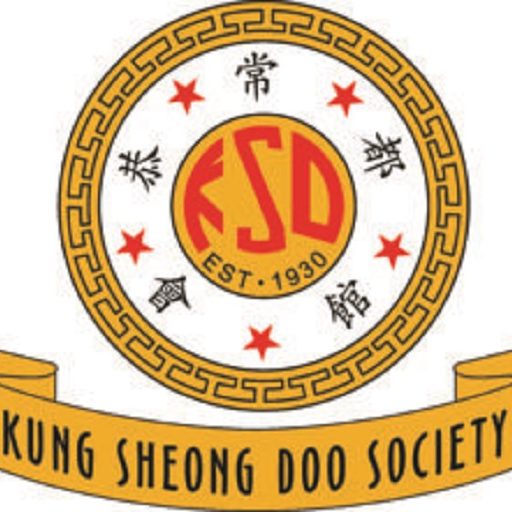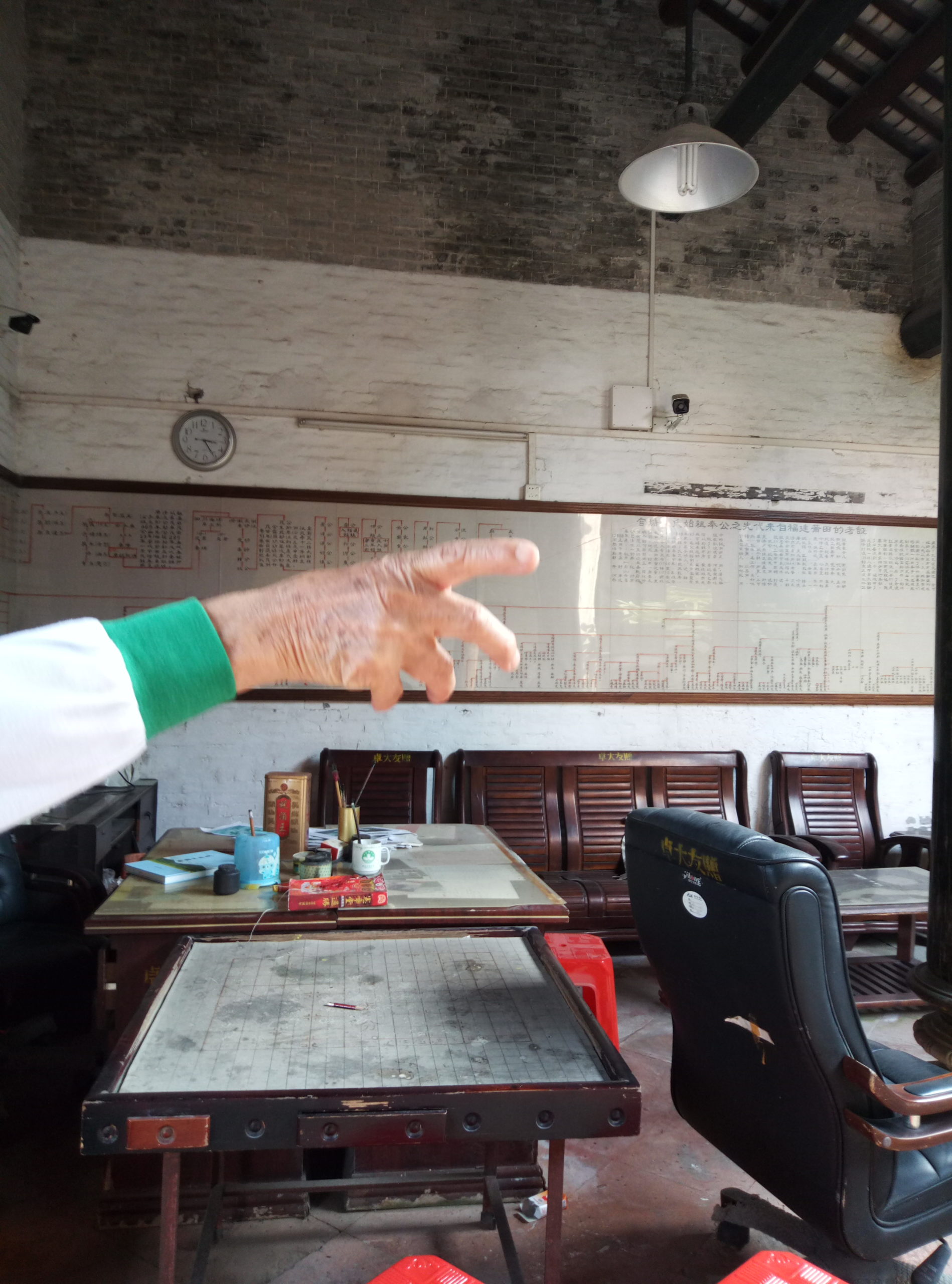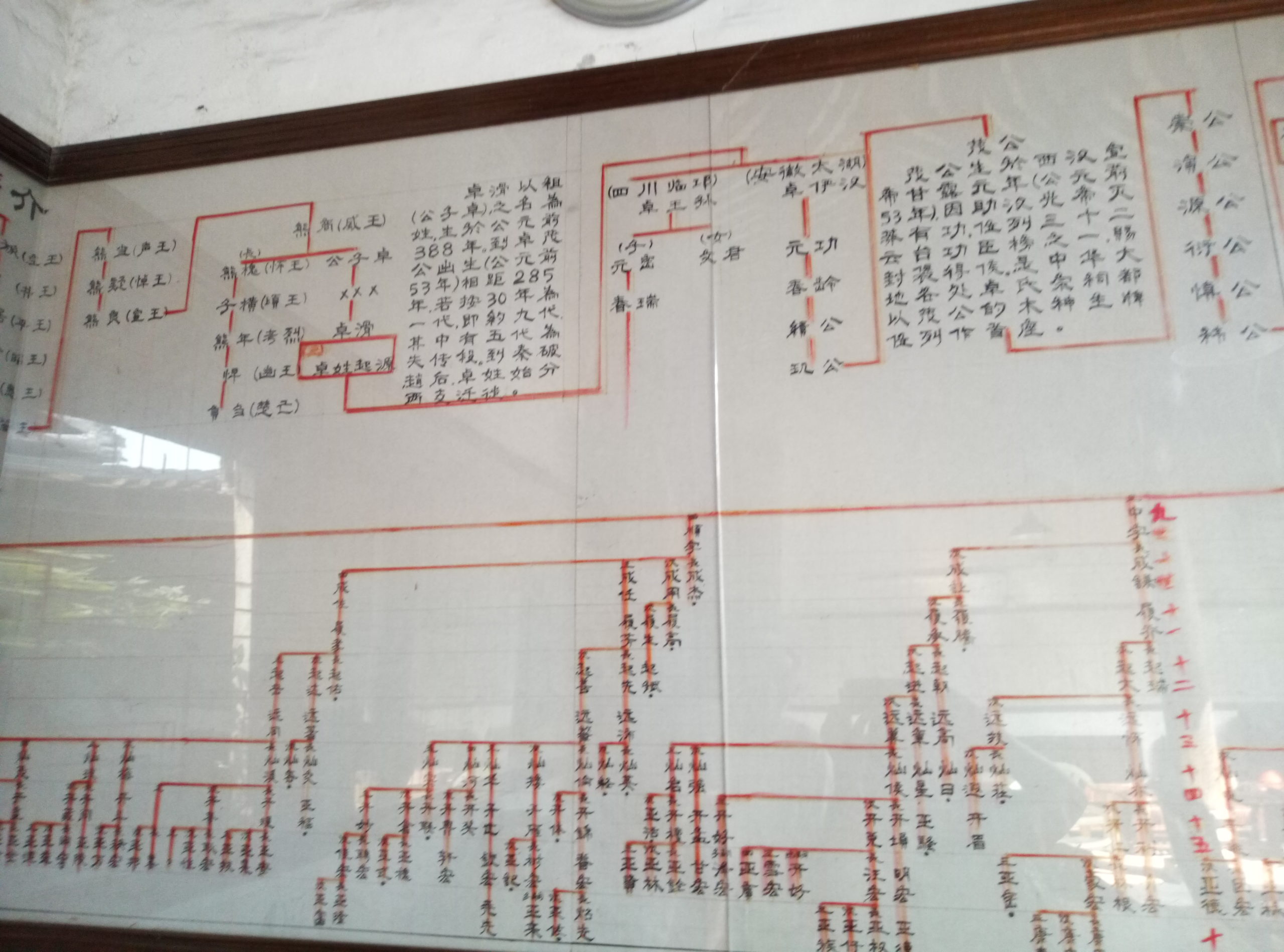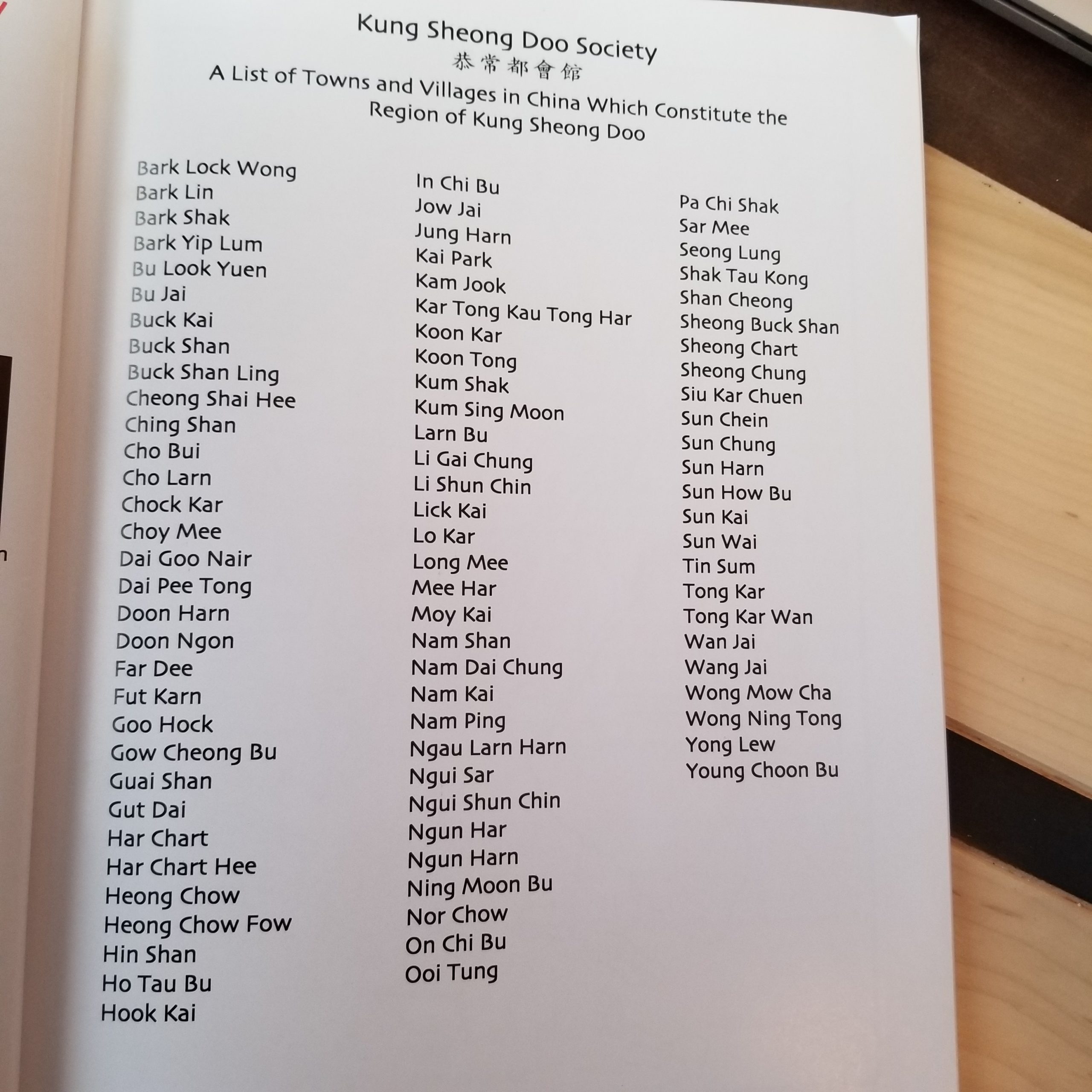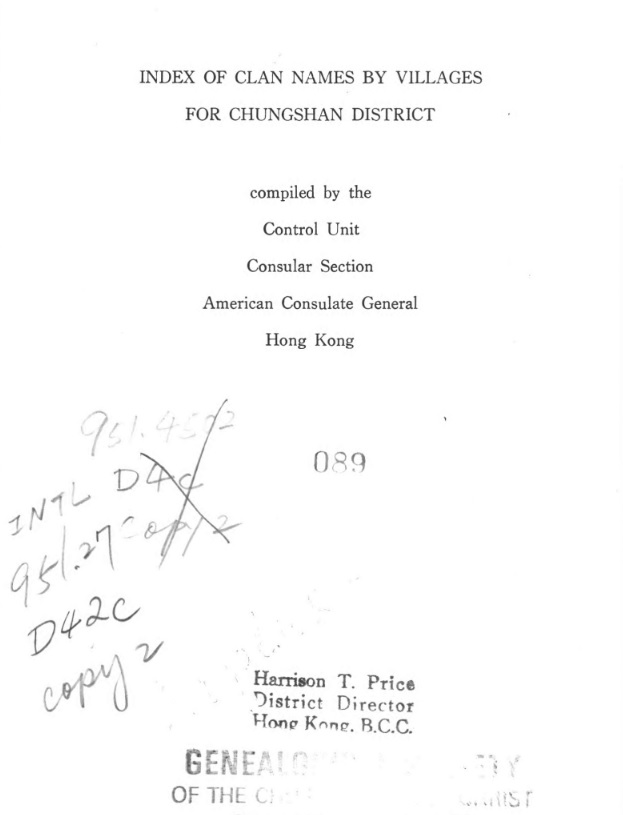
Our
Ancestral Villages
The villages in the Kung Sheong Doo area are home to some of the oldest surname clans in China.
When you search for your ancestors in China, you start by finding their village.
Why you need to find your ancestral village
Unlike civil records documenting births, marriages, and deaths in the West, Chinese genealogical records — jiapus and zupus — are kept, managed, and maintained by the individual clans, not by the state. Keeping accurate family records is a family responsibility in China — not the job of the government.
So if you are trying to find detailed info about your ancestors living in China you won’t find it in official government archives. You will find it in the careful hands of clan elders living in your ancestral village.
Which means won’t find anything until you find the village. Which turns out to be a very tricky proposition unless you know the Hanzi (Chinese characters) for it.
Why Hanzi Matters
Outside of China, Chinese names are spelled phonetically using the Western alphabet — a process called romanization. This can get pretty creative, even for things as important as the place you were born, and your own name.
There are a lot of different ways to spell a Chinese surname in Hawaii. It all depended on which Chinese language (Cantonese, Mandarin, etc.) and even local dialect was the native tongue of the immigrant. And how names sounded to the guy with the pen when he figured out a phonetic spelling for the ship’s manifest, or for port registries from Hilo to Honolulu to Hanalei.
As a result, when you look at Hawaiian census records, birth, death and marriage records, and immigration records, you usually see a wide variety of spellings for the same people’s names throughout their lives. This makes it very hard to find all of the relevant records for a family.
The only thing that never changes is the Hanzi. In this brilliant writing system, the characters carry intrinsic meanings that are understood by all Chinese speakers, even if they do not all say them in the same way.
In English and other alphabet-based languages, letters are combined to create words that describe the way they are pronounced. English children learn to “sound out” a word. Chinese children learn what a character means and pronounce it in whatever language they speak.
This makes these Chinese genealogies incredibly resilient and durable, able to communicate clearly across vastly different Chinese languages and dialects and centuries. If you have the Hanzi for your surname, that’s the only clan name you need.
At this point, many of these records are being digitized and made available online for Chinese descendants to find and use without having to travel to their clan’s village.
The village clan elders continue to update the jiapus in the traditional way, recording new births, deaths, and marriages. But they are glad to have a way of preserving the records digitally, so the vast number of family members living outside China can access them.
But whether you travel to the village or visit a website to get the records, you will need to know the village name and your clan surname — in Hanzi — in order to find your way to the jiapus that hold your story.
Learn more about Chinese Genealogies >
Zhuo Bing Quan consults Pan Sha villagers about who might have the Xu clan records. (2019)
Chock/Zhuo Clan and She/Say Clan newly renovated Grand Ancestral Temples — Guan Tang. (2023)
Guan Tang She/Say clan jiapu, now available online at familysearch.org.
Zhuo Bing Quan, Guan Tang Chock clan genealogist (top left) and Mr. Luo of the Zhuhai Museum (top right) meet with Pan Sha Xu clan elders to digitize zupu. (2021)
Zhuo Bing Quan shows the Chock/Zhuo pedigree installed in the Guan Tang Chock/Zhuo temple. He researched and recreated it over dozens of years at his own expense after it was destroyed during the Cultural Revolution.
Guan Tang Chock/Zhuo pedigree.
Finding the Hanzi for your ancestral village.
The Villages
Below is a list of the villages and towns in the area where our ancestors lived. The names of the villages that appear on the map and list shown here are spelled somewhat differently from the standard Cantonese spellings. (Perhaps a variant spelling used in Hawaii.) This is the way our ancestors spelled them.
These place names are not found on modern maps. Standard Chinese is a modern version of Mandarin that was developed in the Republican era (1912-1949) and is the official language of mainland China today. Cantonese is still spoken in many places, but this version of Mandarin — based on the Beijing dialect — has become the official language of China now.
To make it easier to locate your ancestral village, we have identified the Mandarin spelling and the Hanzi for most of the villages of Kung Sheong Doo. In some cases, the Mandarin is dramatically different from the Cantonese, and since the Hawaiian Cantonese spellings further diverge from standard Cantonese, this task is harder than it sounds.
There are still a few that have not yet had the Mandarin and Hanzi spellings identified. We will update the list as new information is found.
Using this Info
Most of us have grown up with stories about the world our immigrant ancestors left behind. In many cases, we have inherited or found a few letters, immigration documents, land deeds, or even a family Bible that contains references to the place where our immigrant ancestor was born.
Usually the places in those artifacts will be spelled as they are on this map. If you have that, you are in luck! That is the name of your ancestral village, just using an obsolete spelling. You will not find it on Google maps by that name, but if you find it on this list you’ll also get the modern spelling that everyone uses today. And best of all, you’ll get the Hanzi for it!
Grateful appreciation to genealogist Louise Skyles and Mr. Luo of the Zhuhai Museum for their help in identifying the current Mandarin spellings and the Hanzi for these place names.
The Villages and Towns of Kung Sheong Doo
Provided in this order when available:
Cantonese spelling (in Hawaii) / Mandarin spelling / Hanzi
- Bark Lock Wong
- Bark Lin / Bei Ling / 北嶺
- Bark Shak / Bai Shi / 白石
- Bark Yip Lum / Bo Ye Lin / 柏葉林
- Bu Look Yuen
- Bu Jai / Pu Zi / 埔仔
- Buck Kai
- Buck Shan / Bei Shan / 北山
- Buck Shan Ling /Bei Shan Ling / 北山嶺
- Cheong Shai Hee / Chang Sha Xu / 長沙墟
- Ching Shan / Qian Shan / 前山
- Cho Bui / Zai Bei / 灶貝/造貝
- Cho Larn
- Chock Kar
- Choy Mee/ Cui Wei / 翠微
- Dai Goo Nair/Da Gu Na / 大姑乸
- Dai Pee Tong
- Doon Harn / Dong Keng / 東坑
- Doon Ngon / Dong An / 東岸
- Far Dee / Hua Di / 花地
- Fut Karn / Fo Jing / 佛逕
- Goo Hock / Gu He / 古鶴
- Gow Cheong Bu
- Guai Shan / Gui Shan / 桂山
- Gut Dai / Ji Da / 吉大
- Har Chart / Xia Zha / 下柵
- Har Chart Hee / Xia Zha Xu / 下柵墟
- Heong Chow / Xiang Zhou / 香洲
- Heong Chow Fow / Xiang Zhou Bu / 香洲埠
- Hin Shan / An Shan / 蓭山
31. Ho Tau Bu / He Tou Pu / 河頭埔
32. Hook Kai / Fu Xi / 福溪
33. In Chi Bu / Yan Zi Pu / 燕仔埔
34. Jow Jai / 洲仔
35. Jung Harn / 正坑
36. Kai Park / Ji Pai / 雞拍
37. Kam Jook / Jin Zhu / 金竹
38. Kau Tong Har / Jiao Tang Xia / 茭塘廈
39. Koon Kar
40. Koon Tong / Guan Tang / 官塘
41. Kum Shak / Jin Shi / 錦石
42. Kum Sing Moon
43. Larn Bu / Lan Pu / 蘭埔
44. Li Gai Chung / Li Jie Yong / 裡界涌
45. Li Shun Chin / Li Shen Qian / 裡神前
46. Lick Kai / Li Xi / 瀝溪
47. Lo Kar
48. Long Mee / Lang Wei / 蓢尾
49. Mee Har
50. Moy Kai / Mei Xi / 美溪
51. Nam Shan / Nan Shan / 南山
52. Nam Dai Chung / Nan Da Yong / 南大涌
53. Nam Kai / Nan Xi / 南溪
54. Nam Ping / Nan Ping / 南屏
55. Ngau Larn Harn / Niu Nan Keng / 牛欄坑
56. Ngui Sar / Wai Sha /外壆/外沙
57. Ngui Shun Chin / Wai Shen Qian / 外神前
58. Ngun Har
59. Ngun Harn / Yin Keng / 銀坑
60. Ning Moon Bu / Ning Meng Pu /檸檬埔
61. Nor Chow / Na Zhou / 那洲
62. On Chi Bu
63. Ooi Tung / Hui Tong / 會同
64. Pa Chi Shak
65. Sar Mee / Sha Wei / 沙尾(Now Nan Ping南屏)
66. Seong Lung / Shuang Long / 雙龍
67. Shak Tau Kong / Shi Tou Gang / 石頭岡
68. Shan Cheong / Shan Chang / 山場
69. Sheong Buck Shan / Shang Bei Shan /上北山
70. Sheong Chart / Shang Zha /上柵
71. Sheong Chung / Shang Yong /上涌(Now Shang Chong上冲)
72. Siu Kar Chuen / Xiao Jia Cun /蕭家村
73. Sun Chein / Xin Cun /新村
74. Sun Chung / Xin Yong /新埇
75. Sun Harn
76. Sun How Bu
77. Sun Kai / Xin Xi/新溪
78. Sun Wai / Xin Wei/新圍
79. Tin Sum / Tian Xin/ 田心
80. Tong Kar / Tang Jia/ 唐家
81. Tong Kar Wan / Tang Jia Wan/ 唐家灣
82. Wan Jai / Wan Zi / 灣仔
83. Wang Jai / Wang Zi / 網仔
84. Wong Mow Cha / Huang Mao Xie / 黃茅斜(Now Mei Xi梅溪)
85. Wong Ning Tong / Huang Ning Tang / 黃濘塘/黃坭塘
86. Yong Lew / Yang Liao / 羊寮
87. Young Choon Bu / Yang Chun Pu / 陽春埔
Finding which Clans lived in which Villages
Here is a list of the clans for which we have obtained a zupu, and the village where the clan is based.
Place names and surnames are provided in this order:
Cantonese spelling (in Hawaii) / Mandarin spelling / Hanzi
Clan Surname |
Village |
Notes |
| Bow /Bao / 鮑 | Shan Cheong / Shan Chang / 山場 | Awaiting download– FamilySearch center. |
| Chang / Zheng / 鄭 | Goo Hock / Gu He / 古鶴 | |
| Chang / Zheng / 鄭 | Li Gai Chung / Li Jie Yong / 裡界涌 | |
| Chock / Zhuo / 卓 | Koon Tong / Guan Tang / 官塘 | |
| Goo / Gu / 古 | Ngui Shun Chin / Wai Shen Qian / 外神前 | |
| Goo / Gu / 古 | Nor Chow / Na Zhou / 那洲 | |
| Hee / Xu / 許 | Sheong Chung / Shang Yong /上涌 Now Shang Chong / 上冲) | |
| Liu / Liao / 廖 | Dai Goo Nair / Da Gu Na / 大姑乸 | |
| Loo /Lu / 盧 | Sheong Buch Shan / Shang Bei Shan /上北山 | Awaiting permission to use jiapu. |
| Loo / Lu / 盧 | Sheong Chart / Shang Zha / 上柵 | |
| Mock / Mo / 莫 |
Ooi Tung / Hui Tong / 會同
|
|
| Ng / Wu / 吳 | Shan Cheong / Shan Chang / 山場 | |
| Say / She / 佘 | Koon Tong / Guan Tang / 官塘 | |
| Sing / Sheng / 盛 | Nam Kai / Nan Xi / 南溪 | |
| Tam / Tom / Tan / 譚 | Nor Chow / Na Zhou /那洲 | |
| Tong / Tang / 唐 | Kai Park / Ji Pai / 雞拍 | Branch of Tang Jia |
| Tong / Tang / 唐 | Tong Kar / Tang Jia / 唐家 | One jiapu, one zupu. |
| Tsui / Xu / 徐 | Bark Lin / Bei Ling / 北嶺 | |
| Wai / Wei / 韋 | Choy Mee / Cui Wei / 翠微 | |
| Wong / Huang / 黃 | Doon Ngon/ Dong’an / 東岸 | Zupu being compiled. |
| Wong / Huang / 黃 | Shan Cheong / Shan Chang / 山場 | |
| Woo / Hu / 胡 |
Goo Hock / Gu He / 古鶴
|
|
| Young / Rong / 容 | Nam Ping / Nan Ping / 南屏 | |
| Young / Yang / 楊 | Buch Shan / Bei Shan / 北山 |
Index of Clan Names by Villages
Index of clan names by villages for Chungshan district 中山縣各村氏姓索引
If your surname isn’t on the list above, that just means we don’t have as much information readily available about it right now.
But there are some other ways to find your village if you know your clan surname.
Here is an excellent resource which will help you identify which clans came from the different villages of Kung Sheong Doo.
However, they use the standard Cantonese spellings, not the Hawaiian variants used by Kung Sheong Doo, so it may be a little more challenging to match these up with the village names on your family documents.
Village DB
http://villagedb.friendsofroots.org/search.cgi
Roots Village Database is a digitization of the information from the Index of Clan Names By Villages published by the American Consulate General in Hong Kong in the 1970s.
This database offers a useful alternative way to access and filter through the information in the Index. To learn more about the database as well as the source document, check out their About page. http://villagedb.friendsofroots.org/about.html
